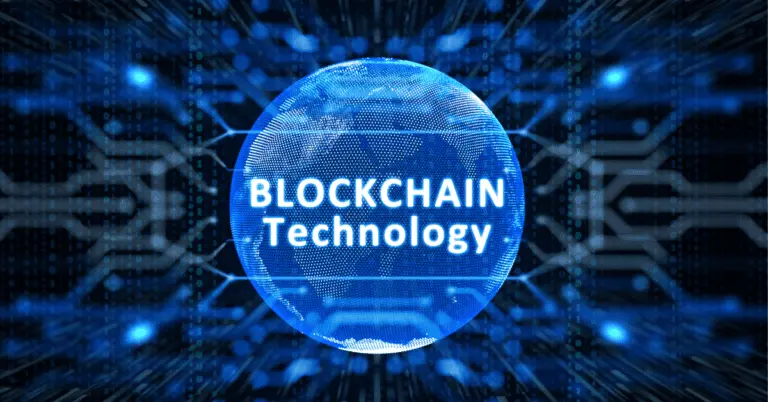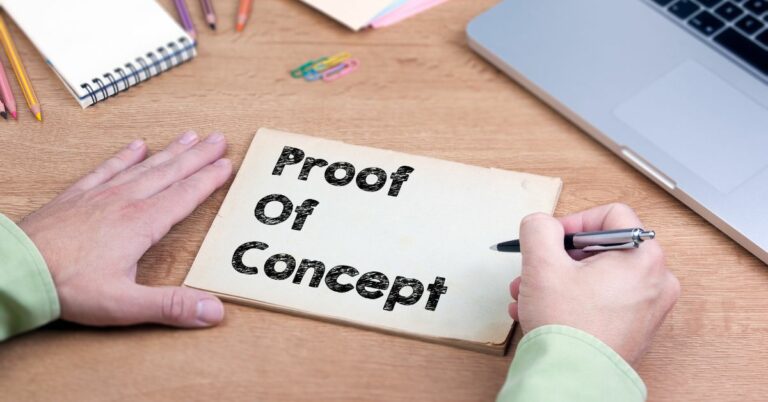Blockchain is the newest buzzword in the tech world. But what is it, really? In layman’s terms, the blockchain is a digital ledger of transactions that is secured using cryptography. This distributed database can be used to record anything of value—from financial transactions to medical records to prove ownership of assets. And because it is decentralized, it is virtually tamper-proof. This guide will explore everything you need to know about blockchain app development.
We will cover topics such as what the blockchain is, how to develop a blockchain app, cost and time estimation to build such apps and what the future of blockchain technology holds. So if you are looking to get started in this exciting new field, read on!
Latest Trends & Statistics in Blockchain App Development
The year 2022 is expected to bring a lot of new opportunities for blockchain app development. With the increasing popularity of blockchain technology, more and more businesses are looking to adopt blockchain apps to improve their operations.
According to a recent report by Grand View Research, the global blockchain market is expected to reach $39.7 billion by 2025, growing at a CAGR of 67.3% from 2018 to 2025. This growth is driven by the increasing adoption of blockchain technology across various industries such as healthcare, banking, and supply chain management.
So, what are the key trends that are driving this growth?
One of the key trends driving the growth of blockchain apps is the increasing demand for transparency and security in business operations. Blockchain technology provides a secure and transparent way to store data and track transactions, which is why it is gaining popularity among businesses. In addition, blockchain apps can help businesses automate their operations and reduce costs.
Another trend that is driving the growth of blockchain app development is the increasing use of smart contracts. A smart contract is a self-executing contract that runs on a decentralized network such as Ethereum. Smart contracts allow businesses to automate their operations and reduce the need for third-party intermediaries. This makes them very attractive for businesses that want to streamline their operations and save costs.
List of Industries in which Blockchain Can be Applied

Blockchain technology can be applied to a number of industries, including:
- Banking and financial services
- Supply chain management
- Healthcare
- Government and public sector
- Retail and eCommerce
- Media and entertainment
- Telecommunications
- Energy and utilities
Blockchain App Development- Things You Need to Know
When it comes to blockchain app development, there are a few key factors to keep in mind.
Is your Blockchain App Development Idea Feasible?
First and foremost, you need to make sure that your idea is actually feasible and that there is a real-world use case for it. There is no point in developing a blockchain application if there is no demand or market for it.
Design & Development Starts
Once you have ascertained that there is indeed a market for your idea, you need to think about the technical aspects of development. This includes everything from choosing the right programming language to building out the infrastructure necessary to support your application.
You also need to consider security very carefully, as blockchain applications are often targeted by hackers due to their decentralized nature. Here are a few latest programming languages that are consistently popular among blockchain developers, and these are worth considering if you’re planning to develop a blockchain application.
Latest Programming Languages for Blockchain App Development
- Solidity: The most popular programming language for blockchain development is currently Solidity, which is used for developing smart contracts on the Ethereum platform. If you’re planning to develop a blockchain application that will run on Ethereum, Solidity is a good choice.
- Java: Another popular language for blockchain development is Java. Java is a well-established language with a large ecosystem of tools and libraries. It’s also easy to learn, making it a good choice for developers who are new to blockchain technology. Java is used by many major corporations for developing enterprise applications, so it has proven scalability and reliability.
- Python: Python is another widely used language that’s well suited for blockchain development. Python is known for its readability and comprehensibility, making it ideal for complex smart contract development. It also has excellent tooling support and a large community of developers who can offer support and advice.
- C++: C++ is another popular language among blockchain developers. It’s a powerful language that’s well-suited for developing high-performance applications. C++ is also used by many major corporations, so it has proven scalability and reliability.
- Rust: Rust is a newer language that’s becoming increasingly popular for blockchain development. Rust is known for its safety and concurrency features, which make it ideal for developing smart contracts. It also has excellent tooling support and a growing community of developers.
Choose the Right Monetization Strategy

Finally, you need to have a plan for how you will monetize your application. This is important because even if your application is successful, it will not be profitable if you do not have a way to generate revenue from it. There are a few different options available here, so be sure to do your research and choose the one that makes the most sense for your particular idea.
Step-by-Step Guide to Implement Blockchain in Different Business Processes
Now that we have covered the basics of blockchain app development, let’s take a look at the actual process of developing a blockchain application. This guide will take you through all of the steps necessary to get your idea off the ground and turn it into a working application.
Step 1. Define Your Idea
The first step in developing a blockchain application is to come up with an idea for what you want to build. This might sound like a simple task, but it is actually quite difficult to do. Remember, your idea needs to be both feasible and in demand in order for it to be successful. Spend some time brainstorming and doing market research until you have something that you are confident will be successful.
Step 2. Identify a Use-Case4
The first step in implementing a blockchain is to identify a use case. This will help determine which type of blockchain is best suited for your needs. There are three main types of Blockchain systems – public, private, and consortium.
- Public Blockchain
Public blockchains are permissionless, meaning anyone can join the network and start validating transactions. Public blockchains are decentralized and have high security due to a large number of participating nodes. The most popular public blockchain is Bitcoin, which uses a proof-of-work algorithm to achieve consensus.
- Private Blockchain
Private blockchains are permissioned, meaning only those with permission from the network administrator can validate transactions. Private blockchains are more scalable due to their smaller number of participating nodes, but they sacrifice decentralization and security for this advantage. The most popular private blockchain is Hyperledger Fabric, which uses a proof-of-stake algorithm to achieve consensus.
- Consortium blockchains
Consortium blockchains are a hybrid of public and private blockchains, where a group of pre-approved entities can validate transactions. Consortium blockchains strike a balance between these extremes, offering both decentralization and scalability. The most popular consortium blockchain is R3 Corda, which uses a voting-based algorithm to achieve consensus.
Once you have identified a use case, you can begin developing a prototype. This will help you test the feasibility of your idea and get feedback from potential users. After developing a prototype, you can move on to building a minimum viable product (MVP).
Step 3. Developing a Proof of Concept (POC)

Developing a proof of concept (POC) is an important step in the process because it allows you to test the feasibility of the proposed solution and see if it actually works in practice. There are a few things that you need to keep in mind when developing a POC for blockchain implementation.
- First, you must clearly define the problem you are trying to solve.
- Second, you need to come up with a solution that leverages blockchain technology to solve that problem.
- Third, you need to create a prototype of the proposed solution and test it out.
Once you have developed a POC, it is important to get feedback from others. This will help you refine the POC and make sure that it is ready for actual implementation.
Step 4. Choose Your Blockchain Platform
Once you have an idea for your application, you need to choose which blockchain platform you want to build it on. There are many different options available, so take some time to learn about each one and decide which one is right for your particular use case. Some of the most popular options include Ethereum, Hyperledger Fabric, and Corda.
There are a number of factors to consider when selecting a blockchain platform for your business. Here are some key considerations:
- What problem are you trying to solve?
The first step is to clearly define the problem that you are trying to solve with blockchain. Once you have a good understanding of the problem, you can start evaluating different platforms to see which one is the best fit.
- What type of application do you need?
There are different types of blockchain applications, each with its own set of requirements. For example, if you need a decentralized application (DApp), then you will need a platform that supports smart contracts.
- What is your budget?
Developing and deploying a blockchain solution can be costly. Make sure to consider all costs involved, such as license fees, hardware costs, and development costs. Also, keep in mind that some platforms may require ongoing maintenance fees.
- What skills do you have?
Building a blockchain solution requires specialized skills and knowledge. If you don’t have these skills in-house, then you will need to outsource the development to experts. This can add significant costs to your project.
How scalable does the platform need to be?
Scalability is an important consideration, especially for businesses that plan to grow quickly. Make sure to choose a platform that can scale to meet your future needs.
- What level of security do you need?
Security is critical for any blockchain application. Choose a platform that offers the level of security that you need, including data encryption and user authentication.
- What are the regulatory requirements?
Some industries are heavily regulated, such as financial services and healthcare. Make sure to choose a platform that complies with all relevant regulations.
- What is the performance like?
Performance is important for any application, but it is especially critical for blockchain applications since they often involve large amounts of data. Choose a platform that offers high performance and low latency.
Step 5. Set Up Your Development Environment

Now that you have chosen a blockchain platform, you need to set up your development environment. This includes installing all of the necessary software and libraries, as well as setting up a testnet so that you can test your application without spending real money. This step is critical to ensure that your application works as intended before you deploy it to the mainnet.
Step 6. Building & Testing Blockchain Solution
The next step in developing a blockchain application is to write your smart contracts. These are the code that will actually run on the blockchain and dictate how your application behaves. They need to be carefully written and tested to ensure that they work correctly and do not contain any errors.
You will need to design and code the smart contracts that will power your application, as well as create any necessary user interfaces. Testing is essential to ensure that your solution works as intended and does not contain any bugs.
Step 7. Deploy Your Application
Once your smart contracts are written and tested, you are ready to deploy your application. This is where it will actually be used by real people and where you will start generating revenue from it. Be sure to carefully test your application before making it available to the public to avoid any major issues.
Step 8. Monitor Your Application
Even after your application is deployed, you need to continue monitoring it to ensure that it is working correctly. This includes keeping an eye on your smart contracts to make sure that they are not being exploited and monitoring your application’s performance to ensure that it is meeting users’ needs.
How much does it Cost to Build a Blockchain App for your Business?
It takes time to develop a blockchain application because it requires an in-depth understanding of how the technology works. The development process also includes designing, testing, and deploying the app. Costs can vary depending on the size and complexity of the app. However, developing a basic blockchain app can cost around $50,000.
Factors considered for cost analysis of blockchain app development are as follows:
- The number of features and functionalities required in the app
- The size and complexity of the app
- The platform on which the app will be developed
- The experience and expertise of the development team
Conclusion
We hope that you have found this guide to be helpful and informative and that you now have a better understanding of what is involved in developing a blockchain application. Blockchain app development is a complex process, but if you follow this guide then you should be able to get your idea off the ground and turn it into a working application.
If you are considering developing a blockchain application, we encourage you to get in touch with us so that we can help you get started.
We are proud to mention that our work has been recognized by leading B2B reviews and research platforms like GoodFirms, Clutch, MirrorView, and many more.


A Detailed Guide on Blockchain App Development in 2023